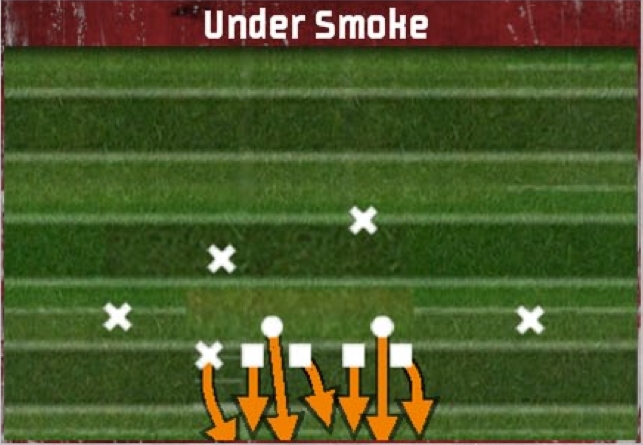A lot of people are having problems defending the Option; be it the I-Form and Flexbone ‘s Triples and Load options, Shotgun ‘s Speed Options and the most dangerous shotgun running play of all, Air Force’s Shotgun Load Option. When NCAA 11 comes out things are not going to get easier (or so we suspect) with the Real Assignment AI blocking, will offer us “Optioneers” a chance to run these plays like they’re run in real life by optioning off the end man on the line of scrimmage or EMLOS. This becomes even more dangerous when plays like the Zone Read and Read Option are actually useful.
There are multiple ways to combat this. The most famous way is playing assignment football
TV analysts often refer to assignment football as a basic need for defenses playing the option. This refers to assigning defenders to each prong of the option. One (or more) defender(s) is assigned to the dive, the QB and the pitch.
Part of the assignment football philosophy is to switch these assignments among defenders in order to put pressure on blocking schemes.
Some common combinations of assignments:
Dive: defensive line
QB: MLB
Pitch: OLB
________________________________________
Dive: MLB and DT
QB: OLB and DE
Pitch: safety
________________________________________
Dive: MLB and defensive line
QB: safety
Pitch: OLB
Besides varying from play-to-play, these assignments will often change from the strong side to the weak side of the offensive formation.
When using this philosophy, prefer the second set up. The D-Line will take the dive with support from the ILBs. The OLBs will take the QB with the Safety taking the Pitch. To build this, I use my base play out of my “G” defense, 4-4 – 2 Deep
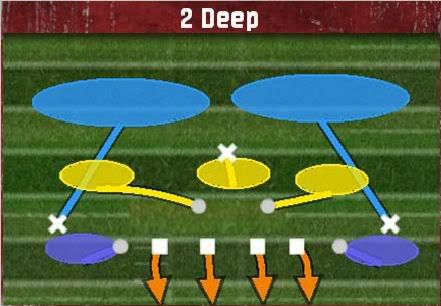
With the Option responsibilities show in the pictures below.
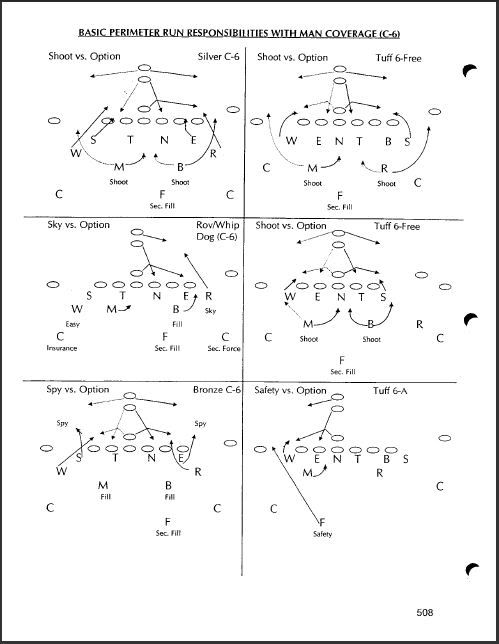
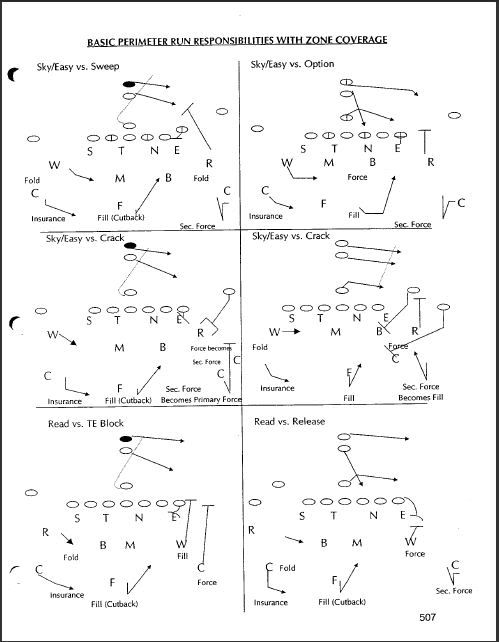
Adjustments
- Set Option Defense to Aggressive to a take the QB*
- Shift the D-line to the Field and Pinch them to handle the dive
- Hot Route OLBs to QB Spy
This play gives you coverage deep coverage, in case of a Option Pass, and puts the OLBs in the “Pitch Alley” You’ll have to user the FS to the play side to cover run support and the FS assignment on the Pitchman. If you played from the Flexbone, you may have seen a lot of your opponents take a Safety and run into the Pitch Alley to disrupt the pitch. Hot routing OLBs to QB Spy will allow them to follow the shadow the QB as he moves behind the line of scrimmage.
Another play I want to tell you about is a
4-2-5 Normal - SS Double Spy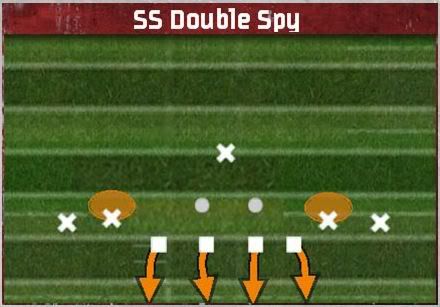
Adjustments
- None
This play is good vs. your Flexbone - Quick Option/Ace Big – Speed Option types. User the FS to clean up the “pitch alley”. It’s a Cover 0 play, So I wouldn’t use it unless somebody is killing you over and over again with the Ace Big – Speed Option.
Another way to play the Option is letting the D-Line take the dive with support from the ILB farthest from the play side. If there is no dive the PSLB will play the QB and the OLB/Secondary will take the Pitchman. To build this I use the
Nickel Strong – QB Contain play. (This play is also found in all the 4-3 alignments, but is global in the Nickel playbooks.)
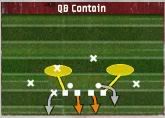
Adjustments:
- Show blitz to walk a safety down into the box
- Spread the line
- Crash line in
I prefer this set up verse shotgun option teams but it works verses under center option too. What this does is gives you a “Scrape Exchange” a real life technique that teams use verses teams that like to use variations of the Zone Read to go along with your Assignment Philosophy. With this defensive adjustment, the defensive end always crashes for the running back, while the linebacker “scrapes” over to take the quarterback. If the quarterback doesn’t see this, he will pull the ball, thinking he will have an easy lane on the backside, and instead runs straight into the linebacker.
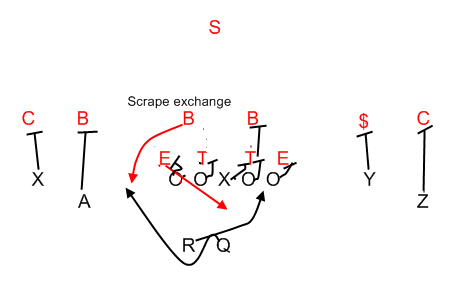 SCRAPE EXCHANGE:
SCRAPE EXCHANGE: PistolxCoach, at the utopia boards is the inspiration for this post as he is the one that gave me the set it up.
I would come out in 3-3-5 Split*, go All Out Blitz, pinch DL crash them in, spread LB's and contain the ILBs... leave the SS's alone that are blitzing, and user the FS... coach tight zone as well...
if that doesn’t help and he is getting outside... then run the same thing, but hot route the SS's to contain, and user the FS but spread the DL and crash them OUT...
either way should give him some fits to get started, and if you are expecting pass, use R1/RT and hot route LB's to hook zones/yellow... and hot route ONE of the SS's to hook as well so you’re still sending 5, dropping 6... I would do the zone audible to the FIELD just to be safe... meaning that if he is on the left hash, then hot route the SS on the right side of your screen, and you can even buzz zone him if he’s going flat... I would still coach tight zones...
...................................F.............. ....................................
.................................................. .....................................
.................................................. .....................................
.....C.......................LB...........LB....................................C.
...................$.............................. ...$................................
.........................B......E........T......E....................................
....................................... ().................................................
B = Line Backer
$ = SS
for added measure, if you’re good at hot routing, I would do what I described ABOVE... and if you have time, R1/RT and Right Stick LEFT to reblitz the LB playing DE so that his angle goes STRAIGHT UP field...
Great set ups, and hopefully with these tools you can stop the option.





















